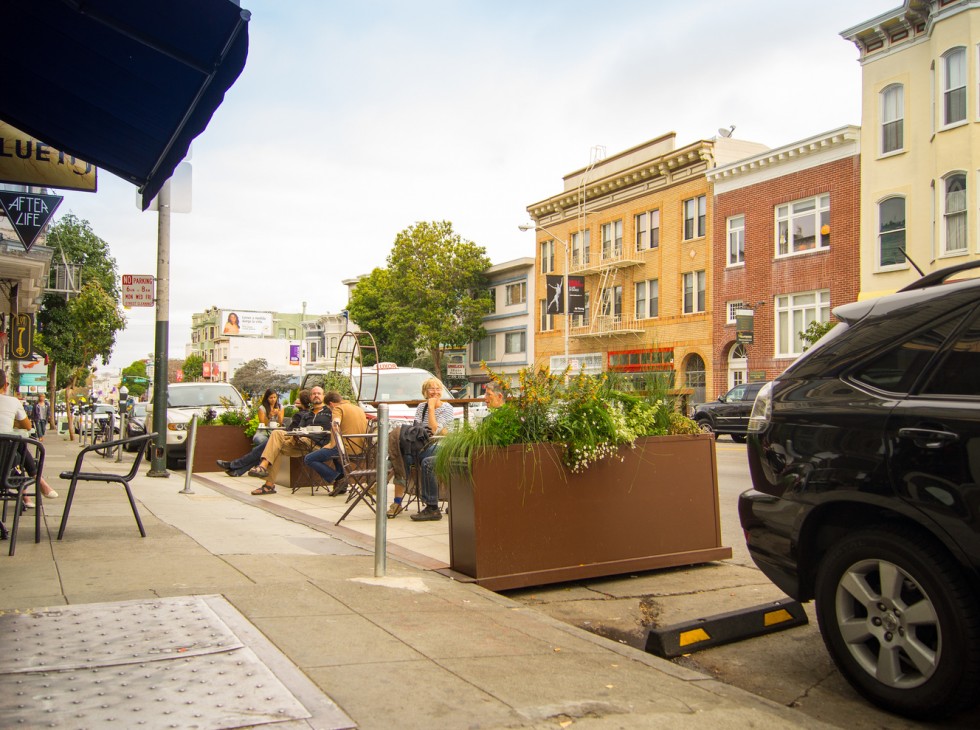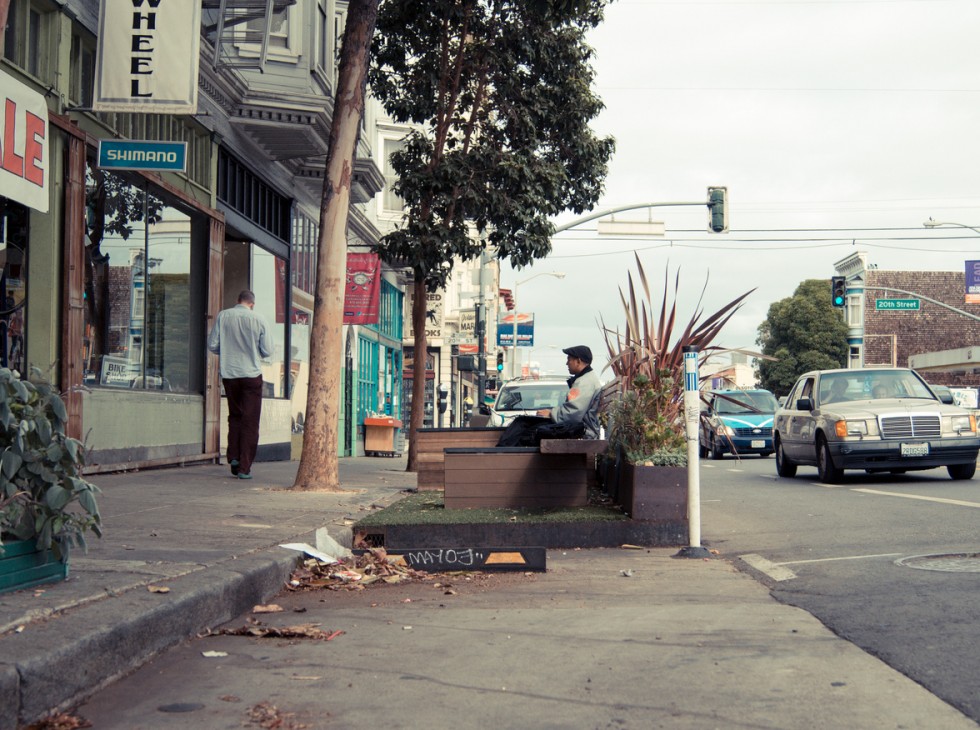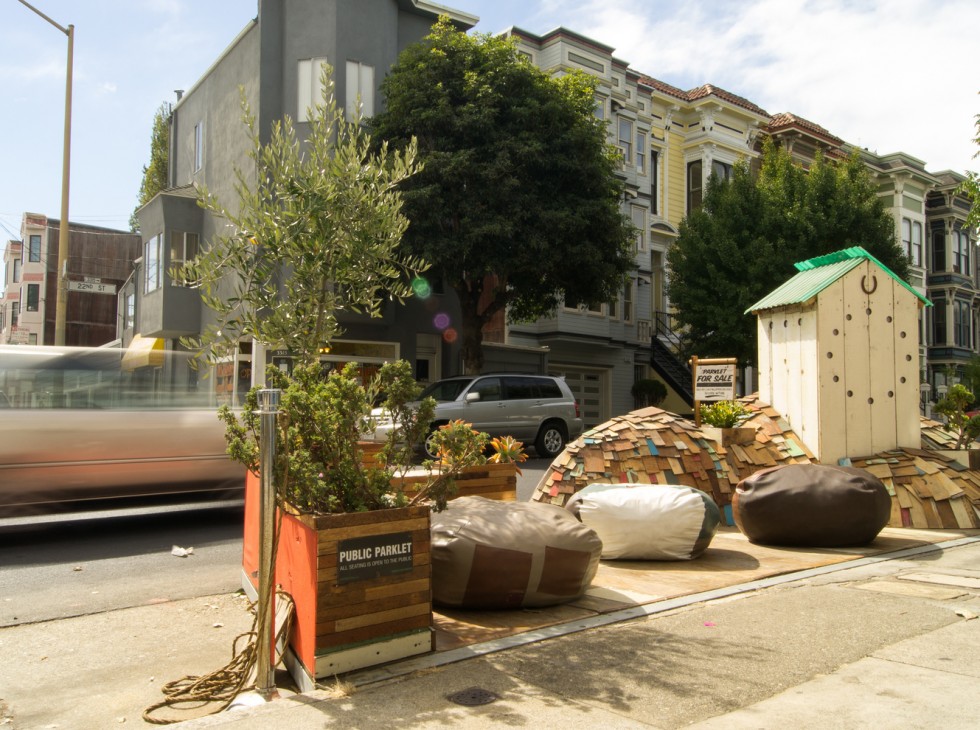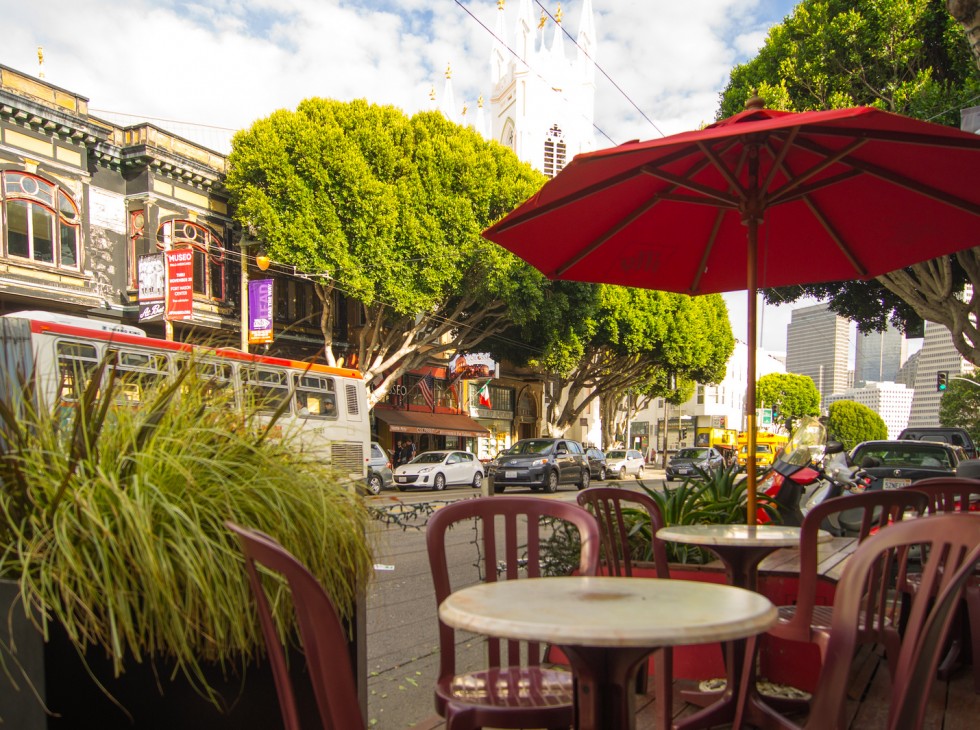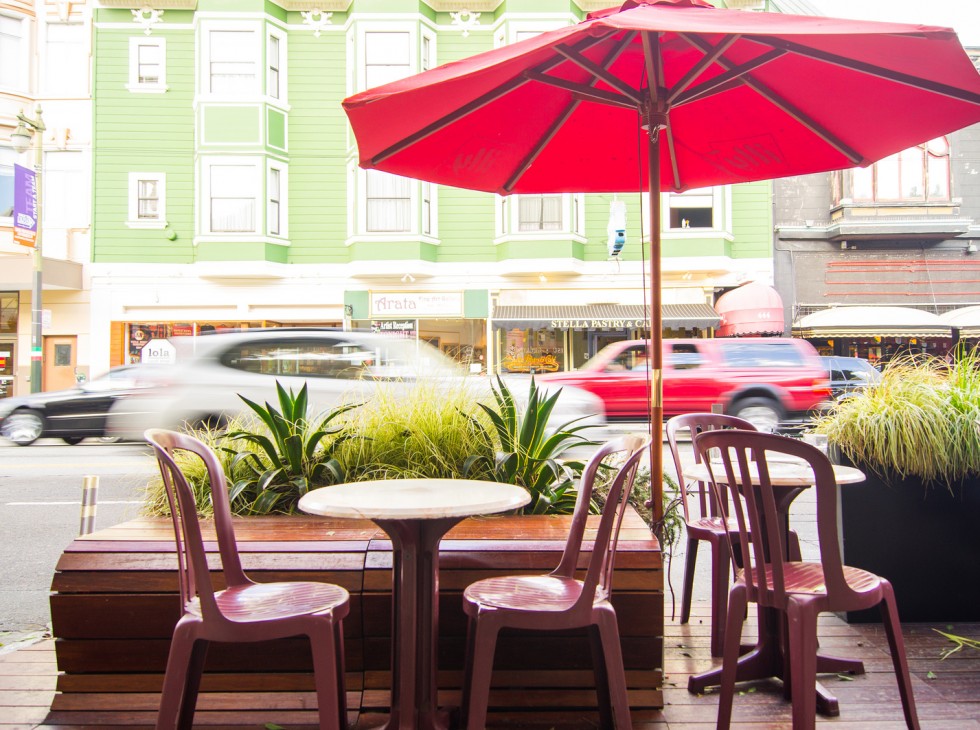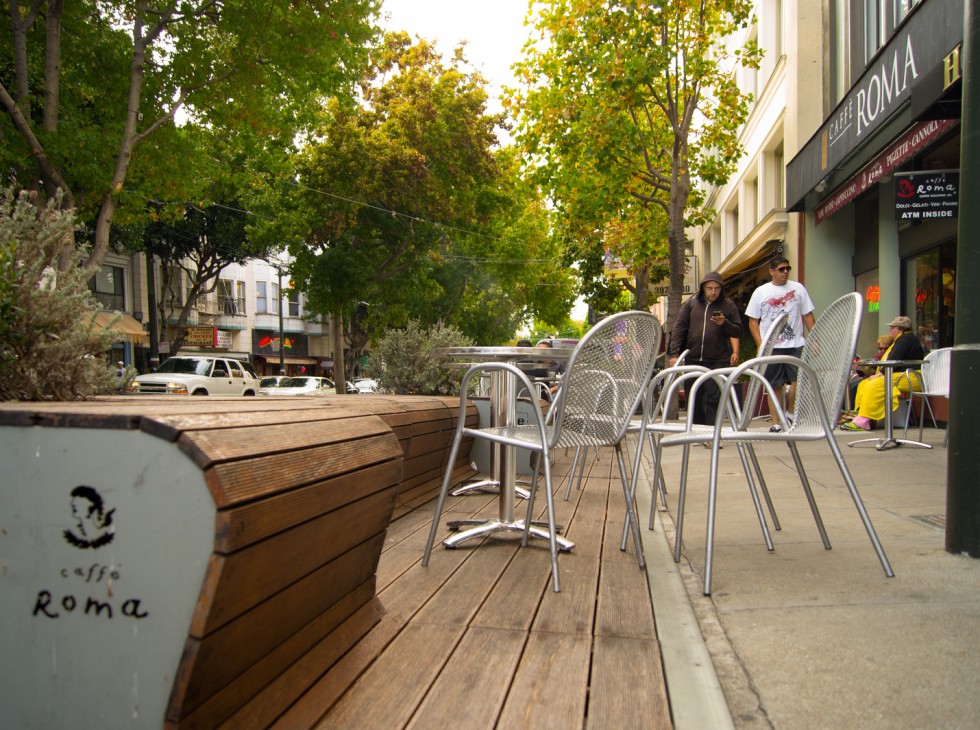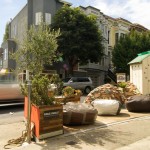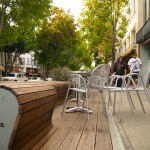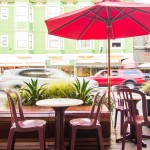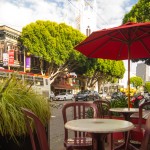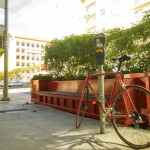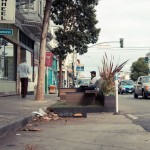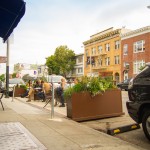Pavement to Parks
- March 12, 2013
- Comments Off
- in Parking
Pavements to Parks
San Francisco, CA
municipal
2012
In a city where streets and sidewalks make up 25% of the land area and parks make up just 18%; San Francisco has been seeking to reclaim some of that area for public space. San Francisco’s Planning Department targeted areas where street widths were excessively wide for new seating areas and miniature parks. Each project is meant to be a unique experiment with the neighborhood it’s constructed with varying degrees of success. The most successful parklets were unique designs that moved beyond a simple “plaza in a parking space” into something more inviting or engaging. Every parklet is hosted by a private business that provides the required daily maintenance and benefits from the additional space but the space is required to remain publicly accessible. In some cases the line becomes blurred, when the furniture from a cafe matches that of parklet it leads to an implied ownership and lack of activity by the public. Some parklets are there to alleviate bike rack space from the sidewalk as is the case in image 6. One of the more interesting installations was at a private driveway for a residence, the parklet exists within the 5’ no parking areas and still allows access to the residence adding public seating with minimal impact on parking or transportation. The program has been so successful that San Francisco now features over 100 installations, some of which are mobile like the parkmobile in the featured image.
photo credits: Trevor Dykstra
